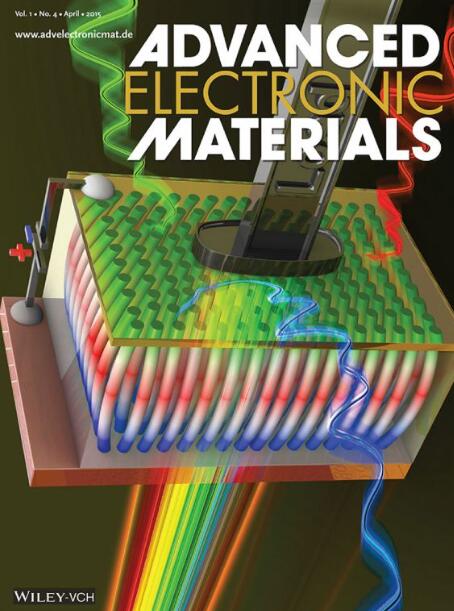甲脒基Ruddlesden - Popper和Dion-Jacobson层状杂化钙钛矿中高氮相的可及性
IF 5.3
2区 材料科学
Q2 MATERIALS SCIENCE, MULTIDISCIPLINARY
引用次数: 0
摘要
层状(2D)杂化钙钛矿为稳定卤化物钙钛矿材料提供了一种很有前途的替代方案,由于其优异的光电性能,人们对用于光伏发电的甲脒(FA+)碘化铅衍生物越来越感兴趣。虽然它们的潜力随着无机层数(n)的增加而增加,但实验证据表明,获得n >;对于FA基层状钙钛矿来说,2相是具有挑战性的。为了解决这一挑战并确定控制高n相形成的条件,研究了含有芳香间隔阳离子的代表性FA基层状杂化钙钛矿材料,即苯铵(BNA)和1,4 -苯二甲基铵(PDMA),作为相应的Ruddlesden - Popper和Dion - Jacobson相的模型体系,分别基于(BNA) 2FAn-1PbnI3n +1和(PDMA) FAn-1PbnI3n +1配方(n = 1 - 3)。此外,Cs+阳离子对n >形成的影响;通过X射线散射测量、固态核磁共振波谱、光电表征和密度泛函理论计算相结合来探索1相。尽管提高了光伏性能,但形成了更高的(n >;2)相被排除在外,即使在Cs+存在的情况下,由于理论研究揭示了其他低维相的有利形成。这些结果有助于全面了解这些材料在光电子学中的应用。本文章由计算机程序翻译,如有差异,请以英文原文为准。
On the Accessibility of Higher‐n Phases in Formamidinium‐Based Ruddlesden‐Popper and Dion–Jacobson Layered Hybrid Perovskites
Layered (2D) hybrid perovskites offer a promising alternative for stabilizing halide perovskite materials, with a growing interest in formamidinium (FA+ ) lead iodide derivatives for photovoltaics due to their exceptional optoelectronic properties. While their potential increases with the number of inorganic layers (n ), the experimental evidence suggests that obtaining n > 2 phases is challenging for FA‐based layered perovskites. To address this challenge and identify the conditions governing the formation of higher‐n phases, representative FA‐based layered hybrid perovskite materials containing aromatic spacer cations, namely benzylammonium (BNA) and 1,4‐phenylenedimethanammonium (PDMA)—are investigated as model systems for the corresponding Ruddlesden‐Popper and Dion‐Jacobson phases based on (BNA)2 FAn–1 Pbn I3n+1 and (PDMA)FAn–1 Pbn I3n+1 formulations (n = 1–3), respectively. Moreover, the effect of Cs+ cations on the formation of n > 1 phases is explored through a combination of X‐ray scattering measurements, solid‐state NMR spectroscopy, optoelectronic characterization, and density functional theory calculations. Despite improved photovoltaic performances, the formation of higher (n > 2) phases is excluded, even in the presence of Cs+ , due to the favorable formation of other low‐dimensional phases revealed by the theoretical investigation. The results contribute to a comprehensive understanding of these materials of broad interest to their application in optoelectronics.
求助全文
通过发布文献求助,成功后即可免费获取论文全文。
去求助
来源期刊

Advanced Electronic Materials
NANOSCIENCE & NANOTECHNOLOGYMATERIALS SCIE-MATERIALS SCIENCE, MULTIDISCIPLINARY
CiteScore
11.00
自引率
3.20%
发文量
433
期刊介绍:
Advanced Electronic Materials is an interdisciplinary forum for peer-reviewed, high-quality, high-impact research in the fields of materials science, physics, and engineering of electronic and magnetic materials. It includes research on physics and physical properties of electronic and magnetic materials, spintronics, electronics, device physics and engineering, micro- and nano-electromechanical systems, and organic electronics, in addition to fundamental research.
 求助内容:
求助内容: 应助结果提醒方式:
应助结果提醒方式:


